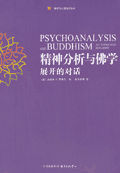
尽管精神分析与佛学之间的对话已有很长的历史了,但系统的考证这两个学科之间的交汇接口却还只是随意散乱的。那些对此对话题感兴趣的精神分析学家们已经趋向于这个边缘地带,此处的功效超出主流精神分析的学术思想之外。近几年,精神分析学家对佛学的兴趣已是日见浓厚。总的来说这种对佛教的兴趣在西方精神分析学术中,以及普遍的文化中同步增加。本书是首次发生在主流精神分析学家与撰写过精神分析与佛学交汇主题的作者之间的一次正式对话。
精神分析与佛学:展开的对话
作者:杰瑞米.D.萨弗兰 Jeremy D. Safran
译者:张天布 等
出版:东方出版中心 第1版 (2012年11月5日)
丛书:佛法与心理治疗译丛
ISBN: 9787547304976
目录
总序一1
总序二1
译序1
导读1
前言1
绪论:精神分析与佛学各为一种文化形态1
第1章 有我与无我:对于在精神分析与佛学中理解自我的再检验29
评论:有我和无我68
回应:我们能说什么是“真实的”自我吗? 74
参考文献83
第2章 藏传佛教和神秘主义的精神分析87
评论:作为一种精神追索的精神分析100
回应:精神分析中精神羞怯的固存 106
参考文献111
第3章 解构虚无114
评论:想象兰甘:一个超越性的自我128
回应:一种饱和的溶液139
参考文献146
第4章 一个分析师的皈依149
评论:一个沉思的回应167
回应:游泳课169
参考文献174
第5章 真的瞬间瞬间的真175
评论:“东是东来西是西,哥俩从来不相逢”(又或,将要喜相逢?)196
回应:东与西业已相逢碰撞抖落出什么? 204
参考文献218
第6章 你的平常心220
评论:精神分析与佛学:通向平常心的两条非凡之路251
回应:路径同样平常257
参考文献262
第7章 精神分析和佛教中的移情和症状转化265
评论:佛教和精神分析中的探索和主观性277
回应:提升我们的主观自由度280
参考文献284
第8章 指向月亮的手指:禅修和拉康精神分析实践286
评论:灵性概念:精神分析中的灵魂在哪? 312
回应:精神分析是世俗而非神学的灵性318
参考文献327
第9章 幸福生活:精神分析和佛学的贡献330
评论:管理精神分析与佛学问交流的桥梁351
回应:超越欧洲中心主义和东方中心主义358
参考文献362
索引364
译者序
http://www.psychspace.com/psych/viewnews-1363
文摘
Preface
The roots of my involvement with Buddhism go back a long way, certainly as far back as my interests in Western psychotherapy and psychoanalysis. I first began meditating at a Zen center in Vancouver prior to beginning graduate training in clinical psychology in the early 1970's and long before undergoing psychoanalytic training. The teacher was an earnest young Zen monk from England. He had a pious manner more reminiscent of my stereotype of a Presbyterian minister than the iconoclastic Zen masters I had read about in Alan Watts' "Psychotherapy East and West." And he had little of the humor and spontaneity I would later come to experience in the Zen masters and Tibetan lamas who have had the greatest impact on me. But to his credit, he did manage to impress upon me the importance of actually sitting and meditating in a disciplined fashion. Although I can't claim to have always been the most diligent of practitioners, my interest in Buddhism has remained consistent over the years. Nevertheless, although the influence of Buddhist thought and practice on my professional writing began to explicitly appear as early as 1990, it has taken considerably longer for me to undertake a project such as this one. As to what all the forces are that finally motivated me to attempt to bring my interests in Buddhism and psychoanalysis together as the central focus of a professional project, I can only speculate. No doubt, as Freud taught us, there are multiple determinants, both conscious and unconscious. And perhaps as Buddhism teaches us there are karmic determinants as well. What I do know is that the time now feels ripe to me.
Although the dialogue between psychoanalysis and Buddhism has a long history, attempts to think about the interface of these two disciplines in a systematic fashion have been scattered and episodic in nature. Psychoanalysts who have been interested in this dialogue have tended to be on the margins- functioning outside of the mainstream of analytic thinking. In recent years, however, there has been an accelerating interest in Buddhism by psychoanalysts that parallels the growing interest in Buddhism both by Western psychotherapists in general and by the culture at large. This book is the first to initiate a formal dialogue between mainstream psychoanalysts and those who write about the interface of psychoanalysis and Buddhism.
It is structured in the form of: primary chapters followed by commentaries, followed by replies written by the authors of the primary chapters in response to the commentaries. The primary chapters explore various aspects of the interface between psychoanalysis and Buddhism. These chapters are written by authors who are equally conversant with the worlds of psychoanalysis and Buddhism, and who in many cases have made seminal contributions to this interface in the past. The commentaries are all written by psychoanalytic theorists who in most cases have a rather limited familiarity with the topic of Buddhism, but sufficient interest to be willing to engage in the dialogue. I was fortunate to be able to enlist the participation of a highly prominent group of psychoanalytic thinkers, many of whom have had an important impact on the development of contemporary psychoanalytic theory. Their willingness to participate in this enterprise is a reflection of the growing interest by psychoanalysts in Buddhism in recent years. Although there has always been an underground of "Buddhaphiles" within the psychoanalytic community, it is unlikely that the type of dialogue represented by this book could have taken place as recently as a few years ago. My hope is that this dialogue will help to raise thinking about the interface between psychoanalysis and Buddhism to a new level of sophistication, and to stimulate an interest in the topic by both a wider audience of psychoanalysts and psychotherapists, as well as the general public.
I have written the introductory chapter, "Psychoanalysis and Buddhism as Cultural Institutions", to provide a context for this dialogue. It does so by sketching out the cultural and historical factors that have influenced the development of both psychoanalysis and Buddhism, and that are currently influencing the accelerating interest in Buddhism within Western culture and by the psychoanalytic community. A second agenda of mine in this chapter is to review some of the major themes and developments within both psychoanalysis and Buddhism in order to provide some background for those who are less familiar with either of these two traditions.
A final objective of the my introductory chapter, and of the book as a whole, is to provide those who are not familiar with contemporary psychoanalysis with a taste of some of the exciting and forward looking developments that are taking place within it. Western psychotherapy began with the emergence of psychoanalysis at the beginning of the twentieth century and for many years psychoanalysis was the dominant form of psychological treatment. Although psychoanalysis has always provided a conceptually rich and sophisticated framework for understanding human experience, it has also had tendencies towards reductionistic thinking and pseudoscientific sterility. As it became increasingly well established as a cultural institution, it tended to lose some of its more revolutionary and progressive potential, and to become arrogant, conservative and insular. In the 1960's psychoanalysis began to fall upon hard times. Within the field of psychiatry it was superceded by the biological revolution. And as a form of psychotherapy, it was outflanked on one side by the cognitive-behavioral tradition, with its pragmatic emphasis and its claim to scientific legitimacy, and on the other by humanistic psychotherapists with their recognition of the fundamental importance of human dignity and potential. In recent years, however, there has been a revitalization in psychoanalytic theory and practice that has broken the shackles of conservatism and that is shaping it in a direction that is increasingly responsive to the yearnings of the human heart and soul. I see this book as both a reflection of this revitalization process and as a continuation of it.
Jeremy D. Safran, April, 2003





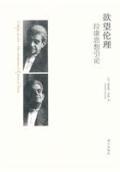

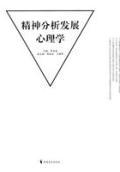
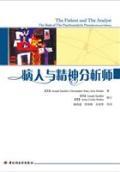

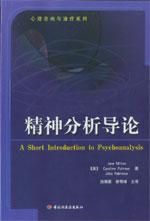

最新评论